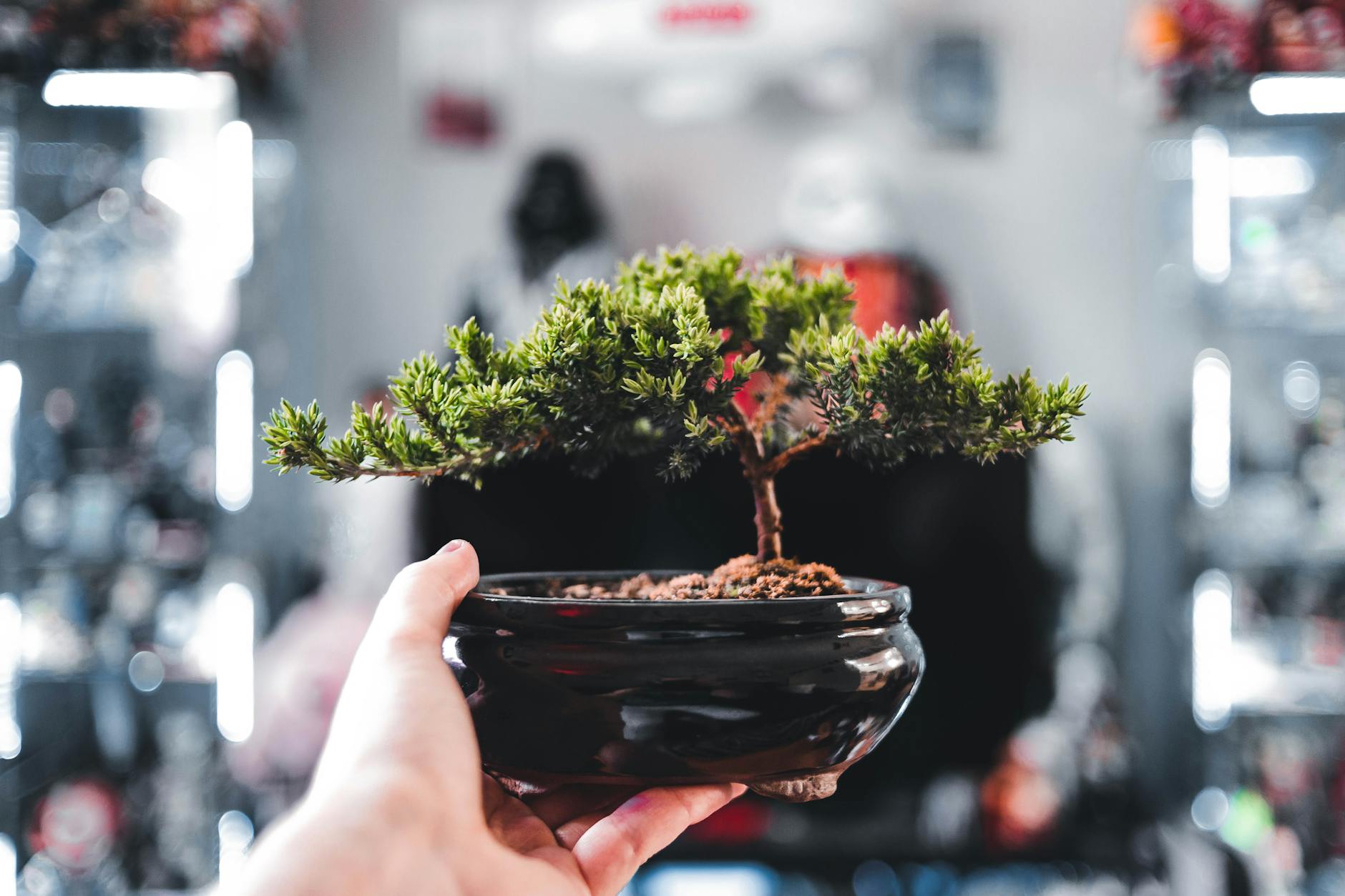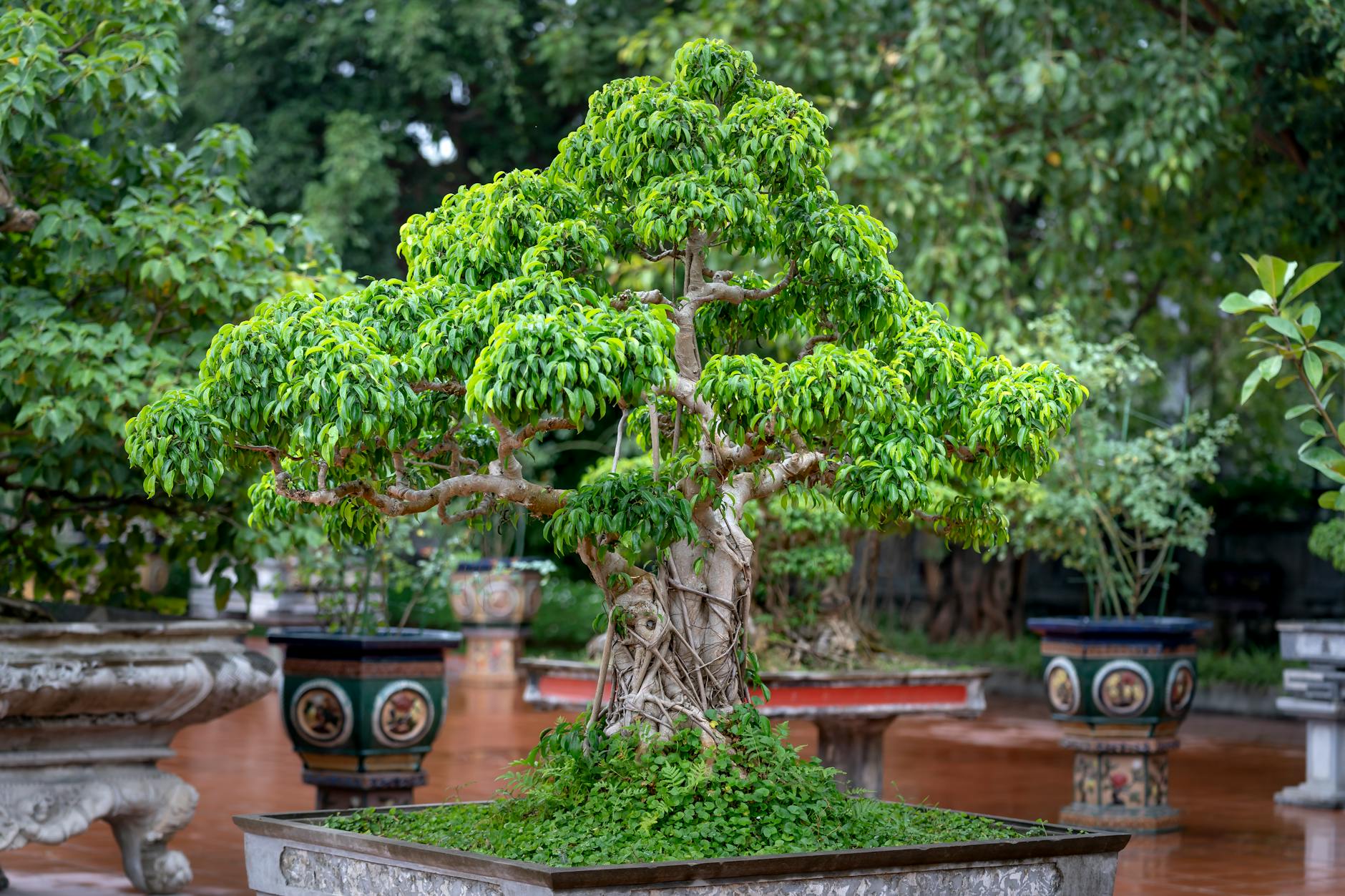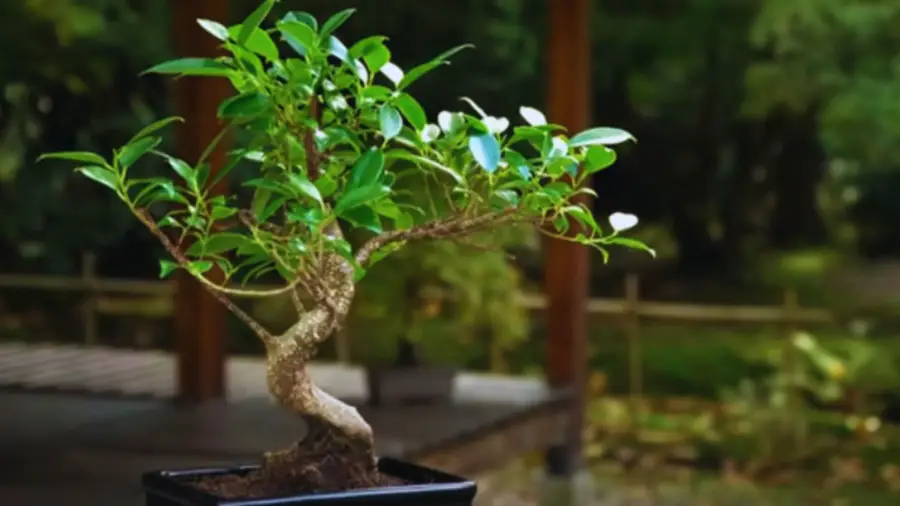
Have you ever gazed at a perfectly styled Ficus bonsai and wondered how it got its mesmerizing shape? I still remember my first encounter with these miniature wonders – a stunning formal upright Ficus that looked like it had been dancing with time itself. That moment sparked my decade-long journey into the art of Ficus bonsai styling.
While many see Ficus as just another houseplant, I’ve discovered it’s one of the most versatile species for bonsai artistry. From dramatic cascading forms to elegant informal uprights, these resilient trees can be shaped into nearly any style imaginable. Through years of trial and error (and yes, a few accidentally defoliated branches), I’ve learned that understanding the right techniques makes all the difference between creating a masterpiece and just pruning a small tree.
In this guide, I’ll walk you through everything I’ve learned about Ficus bonsai styling – from selecting the right species and basic forms to advanced shaping techniques that will transform your tree into a living work of art. Let’s explore the fascinating world of Ficus bonsai styles together!

Understanding Ficus Species for Bonsai
Most Suitable Ficus Varieties
In my experience working with ficus bonsai, I’ve found several varieties that excel in bonsai cultivation. Here’s my top recommended species:
- Ficus microcarpa (Tiger Bark)
- Ficus retusa
- Ficus benjamina
- Ficus religiosa
Growth Characteristics
I’ve observed that ficus trees possess remarkable growth characteristics that make them ideal for bonsai cultivation:
| Feature | Description |
|---|---|
| Growth Rate | Fast to moderate |
| Leaf Size | Small to medium |
| Bark Texture | Smooth to rough |
| Root Development | Aggressive aerial roots |
| Branch Structure | Flexible and dense |
Natural Habitat Requirements
Through years of cultivation, I’ve learned that recreating natural habitat conditions is crucial for success. I maintain my ficus bonsai under these specific conditions:
- Temperature: 65-85°F (18-29°C)
- Humidity: 50-70%
- Light: Bright, indirect sunlight
- Soil: Well-draining mix with organic matter
When caring for my ficus bonsai, I’ve noticed they’re particularly sensitive to sudden environmental changes. I keep them away from cold drafts and maintain consistent watering schedules. Their tropical nature means they thrive in warm, humid environments, making them excellent indoor bonsai specimens.
Now that we understand the foundation of ficus species selection and care requirements, let’s explore the various styling options these versatile trees offer.

Ficus Bonsai Styles: Popular Ficus Bonsai Styles
In my years of experience working with ficus bonsai, I’ve found that these versatile trees can be shaped into various stunning styles. Each style I’m about to share has its own unique characteristics and challenges.
Formal Upright Style
I consider this the most classic bonsai style. When I create a formal upright ficus, I ensure the trunk is perfectly straight and tapers gradually from base to apex. The branches I select are positioned symmetrically, forming a triangular silhouette.
Informal Upright Style
This is my favorite style for ficus bonsai. I create gentle curves in the trunk while maintaining an overall upright position. Here’s how I arrange the key elements:
- Primary branches alternate sides
- Branch thickness decreases with height
- Curves follow a natural S-pattern
- Crown forms an asymmetrical triangle
Slanting Style
When I style a slanting ficus, I angle the trunk at approximately 45 degrees. I’ve found this style particularly striking with species like Ficus retusa.
Cascade Style
I love creating dramatic cascade styles where the trunk grows downward, below the pot’s base. Here’s a comparison of cascade variations I work with:
| Style | Characteristics | Difficulty |
|---|---|---|
| Semi-cascade | Trunk drops to pot rim | Moderate |
| Full cascade | Extends below pot base | Advanced |
| Double cascade | Multiple dropping branches | Expert |
Root-Over-Rock Style
I’ve discovered that ficus species excel in this style due to their aggressive aerial roots. I carefully position the roots to naturally embrace and grip the rock surface.
Now that you understand these fundamental styles, let’s explore the specific techniques I use to shape these beautiful trees.

Shaping Techniques
Wiring Methods
I’ve found that wiring is crucial for creating stunning ficus bonsai shapes. When I wire my ficus, I always use aluminum wire as it’s gentler on the branches than copper. Here’s my proven wiring sequence:
- Start with thicker branches (use 2-3mm wire)
- Move to secondary branches (1.5-2mm wire)
- Finish with fine branches (1mm wire)
Pruning Guidelines
Through years of experience, I’ve developed a systematic approach to pruning my ficus bonsai:
| Pruning Type | Timing | Purpose |
|---|---|---|
| Structural | Spring | Remove large branches |
| Maintenance | Year-round | Control growth |
| Defoliation | Summer | Reduce leaf size |
I always make clean cuts at a 45-degree angle, ensuring they’re just above a node. This promotes healing and encourages new growth in the desired direction.
Branch Placement
In my experience, proper branch placement is essential for creating a balanced ficus bonsai. I follow these key principles:
- Position primary branches at 45-degree angles
- Space branches alternately on the trunk
- Maintain decreasing branch thickness from bottom to top
- Keep branches shorter near the apex
I’ve learned that ficus species respond well to gradual adjustments. When I shape branches, I make small changes over time to prevent stress and leaf drop. Now that we understand these fundamental shaping techniques, let’s explore some advanced styling elements that will truly make your bonsai stand out.

Advanced Styling Elements
Aerial Root Development
I’ve found that developing aerial roots is one of the most distinctive features of Ficus bonsai. In my experience, maintaining humidity levels above 80% consistently helps encourage aerial root growth. I create a humidity tent using clear plastic and mist the aerial roots daily. Here’s my proven method for successful aerial root development:
- Apply sphagnum moss around areas where I want roots to form
- Maintain temperatures between 75-85°F (24-29°C)
- Keep the moss consistently moist but not waterlogged
- Remove the moss once roots are established
Trunk Fusion Techniques
When I work on trunk fusion, I carefully select young Ficus trees of similar thickness. Here’s my comparison of fusion methods:
| Technique | Time Required | Success Rate | Difficulty |
|---|---|---|---|
| Approach | 6-12 months | 90% | Moderate |
| Thread | 12-24 months | 70% | Advanced |
| Ring | 3-6 months | 85% | Easy |
Leaf Reduction Methods
I’ve developed several effective strategies for reducing leaf size:
- Regular defoliation in growing season
- Controlled pruning of new growth
- Reduced fertilization during active growth
- Root pruning in early spring
Nebari Enhancement
To enhance the nebari (surface roots), I focus on exposing the roots gradually. I’ve learned that removing soil carefully over several months yields better results than aggressive exposure. I combine this with strategic root pruning to encourage radial growth patterns.
Now, let’s explore how to maintain these advanced styling elements for long-term success.

Maintaining Styled Ficus
Watering Requirements
I’ve found that maintaining proper watering habits is crucial for my ficus bonsai. I water my tree when the top layer of soil feels slightly dry to the touch, typically every 2-3 days. During summer, I increase watering frequency, while in winter, I reduce it significantly.
| Season | Watering Frequency | Soil Moisture |
|---|---|---|
| Summer | Every 1-2 days | Keep moist |
| Winter | Every 4-5 days | Slightly dry |
Light and Temperature Control
I keep my ficus bonsai in a bright location with indirect sunlight. From my experience, direct afternoon sun can scorch the leaves. I maintain room temperatures between 60-75°F (15-24°C), protecting the tree from cold drafts that can cause leaf drop.
Key temperature considerations:
- Minimum: 60°F (15°C)
- Optimal: 68-75°F (20-24°C)
- Maximum: 85°F (29°C)
Fertilization Schedule
I feed my ficus bonsai regularly using a balanced fertilizer (NPK 6-6-6). During the growing season (spring and summer), I apply fertilizer every two weeks. In fall and winter, I reduce feeding to once monthly.
Now that we understand these maintenance basics, let’s look at some advanced styling elements that can enhance our ficus bonsai’s appearance.

After exploring various Ficus bonsai styles and techniques, I’ve found that these versatile trees offer endless creative possibilities. From the classic formal upright to the dramatic windswept style, each approach brings out unique characteristics of the Ficus species. The key is matching the styling technique with the tree’s natural growth patterns while maintaining proper care throughout the shaping process.
I encourage you to experiment with different styles that speak to your artistic vision. Remember that successful Ficus bonsai styling is a journey that requires patience, consistent maintenance, and attention to detail. Whether you’re a beginner starting with basic shapes or an experienced enthusiast attempting advanced techniques, the reward of creating your own living artwork makes it all worthwhile.
Unlock Your Inner Bonsai Artist
Have you ever envisioned creating a Ficus bonsai that feels like a true masterpiece—one that captivates with its elegance and tells a story of care, patience, and artistry? Whether you’re drawn to the disciplined beauty of a formal upright style or the untamed drama of a cascading form, Ficus bonsai trees offer a canvas for endless creativity.
The art of bonsai styling is as much about understanding the tree as it is about understanding yourself. What story do you want your bonsai to tell? Which style resonates most with your personality? From wiring methods to nebari enhancement, every technique you apply brings you closer to shaping not just the tree but also your connection to nature.
So, why wait? Begin your journey with the versatile Ficus species—nurture those aerial roots, experiment with informal curves, and revel in the transformation of a humble sapling into a living sculpture. Remember, even the smallest snip or twist can make a world of difference.
As you care for your bonsai, let it remind you that great things grow not in haste, but in steady, thoughtful progress. What style will you explore first? The possibilities are endless, and the journey is uniquely yours. Let your creativity flourish, one branch at a time.
